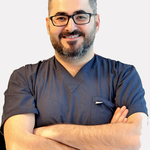











Rhinoplasty is one of the most common plastic surgeries. It is performed to people who are uncomfortable with the appearance of the nose and want to change it or who have a deterioration in the shape of the nose for various reasons. The nose is not just an organ related to visual aesthetics, it has important functions such as breathing and smelling. For this reason, if there are problems that cause insufficiency in nasal function such as nasal curvature (deviation), flesh growth (concha hypertrophy) or valve insufficiency during rhinoplasty, they must be corrected during plastic surgery.
Our nose, which is one of the most important parts of our body due to its location, can cause greater effects in our lives than we think when it comes to deformities. Especially the negativities in social life, business life and the problems experienced in bilateral relations can cause the person to have psychological difficulties and even to lose self-confidence. Therefore, beyond being an aesthetic concern, rhinoplasty may be a necessity in some cases.
The aim of rhinoplasty is to shape the nose in accordance with the face shape, and breathing problems due to bone and cartilage tissue curvatures can also be eliminated.
Rhinoplasty surgery takes about 1 to 3 hours on average. Nasal aesthetic surgeries, which can be performed under general or local anesthesia, are basically performed with two different techniques, open and closed.
In closed technique rhinoplasty, incisions are made through the nose.
In the open technique, in addition to the incisions made through the nose, a very small incision of approximately 2 millimeters in length is made in the columella of the nose (the part that is visible from the outside of the middle support).
In cases where the nose wings need to be narrowed, additional incisions of approximately 5-6 millimeters can be made in the fold at the base of the nose wings.
Open and closed techniques have their own advantages and disadvantages. Since the anatomy of each patient is unique, there is no standard rhinoplasty application and a clear technique is not recommended before the examination.
WHAT SHOULD NOT BE DONE BEFORE SURGERY?
WHEN CAN I WEAR GLASSES AFTER THE SURGERY?
Patients can use glasses after 3 months. During this period, it is recommended to use contact lenses. It is recommended to switch to the lens 2 weeks before the operation.
WHEN CAN I EXERCISE?
WHEN DO THE SWELLING AND BRUISES AROUND THE EYES DISAPPEAR?
Swelling in the first week, bruises in the second week.
WHEN DOES EDEMA DISAPPEAR?
Nasal swelling, that is, nasal edema, disappears within 1 year from the operation. In the first 3 months, most of them pass and the main lines of the nose appear. In the next 9 months, the nose continues to weaken and thin. The nose tip details are revealed and its beauty is increased.
What does CLINICS UNITED offer patients?
How many specialists are there and what accreditation's have been awarded to CLINICS UNITED?
Rhinoplasty, commonly known as the “nose job,” is plastic surgery to change the shape of the nose and to improve its function. This procedure can be performed for medical and cosmetic reasons. Those with breathing problems caused by a birth defect, deviated septum, sinusitis, or an injury to the nose, as well as those who are not happy with the appearance of their nose, can undergo rhinoplasty.
Rhinoplasty has a number of benefits. However, the most compelling reason for patients to have this surgery is to improve the appearance of their noses, which can boost their self-esteem significantly. Besides altering the form and size of your nose, the procedure can also strengthen the bridge, narrow the nostrils, and reshape the tip.
While anyone can undergo rhinoplasty, teenagers are advised to wait until their nose has reached its adult size.
You generally need to wait at least 2 to 3 weeks until you can resume most of your normal activities. However, you should not perform any strenuous activities, such as intense exercise, for about 3 to 6 weeks. During the first few days after the surgery, you will experience some swelling around your eyes, but these will subside within 3 to 14 days. You will also have to wear a nasal splint for about a week following the surgery.
Rhinoplasty is considered one of the most complicated facial cosmetic surgeries. However, thanks to the advances in technology and surgeons’ extensive experience, the procedure has a very high success rate of between 85% and 90%.
Although rhinoplasty is generally safe, it does carry some potential risks of complications and side effects, including bleeding, infection, allergic reaction to the anesthesia, permanent numbness in your nose, difficulty breathing through the nose, an uneven-looking nose, discoloration, persisting pain, scarring, septal perforation, and a need for additional surgery.


















Rhinoplasty is one of the most common plastic surgeries. It is performed to people who are uncomfortable with the appearance of the nose and want to change it or who have a deterioration in the shape of the nose for various reasons. The nose is not just an organ related to visual aesthetics, it has important functions such as breathing and smelling. For this reason, if there are problems that cause insufficiency in nasal function such as nasal curvature (deviation), flesh growth (concha hypertrophy) or valve insufficiency during rhinoplasty, they must be corrected during plastic surgery.
Our nose, which is one of the most important parts of our body due to its location, can cause greater effects in our lives than we think when it comes to deformities. Especially the negativities in social life, business life and the problems experienced in bilateral relations can cause the person to have psychological difficulties and even to lose self-confidence. Therefore, beyond being an aesthetic concern, rhinoplasty may be a necessity in some cases.
The aim of rhinoplasty is to shape the nose in accordance with the face shape, and breathing problems due to bone and cartilage tissue curvatures can also be eliminated.
Rhinoplasty surgery takes about 1 to 3 hours on average. Nasal aesthetic surgeries, which can be performed under general or local anesthesia, are basically performed with two different techniques, open and closed.
In closed technique rhinoplasty, incisions are made through the nose.
In the open technique, in addition to the incisions made through the nose, a very small incision of approximately 2 millimeters in length is made in the columella of the nose (the part that is visible from the outside of the middle support).
In cases where the nose wings need to be narrowed, additional incisions of approximately 5-6 millimeters can be made in the fold at the base of the nose wings.
Open and closed techniques have their own advantages and disadvantages. Since the anatomy of each patient is unique, there is no standard rhinoplasty application and a clear technique is not recommended before the examination.
WHAT SHOULD NOT BE DONE BEFORE SURGERY?
WHEN CAN I WEAR GLASSES AFTER THE SURGERY?
Patients can use glasses after 3 months. During this period, it is recommended to use contact lenses. It is recommended to switch to the lens 2 weeks before the operation.
WHEN CAN I EXERCISE?
WHEN DO THE SWELLING AND BRUISES AROUND THE EYES DISAPPEAR?
Swelling in the first week, bruises in the second week.
WHEN DOES EDEMA DISAPPEAR?
Nasal swelling, that is, nasal edema, disappears within 1 year from the operation. In the first 3 months, most of them pass and the main lines of the nose appear. In the next 9 months, the nose continues to weaken and thin. The nose tip details are revealed and its beauty is increased.
What does CLINICS UNITED offer patients?
How many specialists are there and what accreditation's have been awarded to CLINICS UNITED?






















Rhinoplasty is one of the most common plastic surgeries. It is performed to people who are uncomfortable with the appearance of the nose and want to change it or who have a deterioration in the shape of the nose for various reasons. The nose is not just an organ related to visual aesthetics, it has important functions such as breathing and smelling. For this reason, if there are problems that cause insufficiency in nasal function such as nasal curvature (deviation), flesh growth (concha hypertrophy) or valve insufficiency during rhinoplasty, they must be corrected during plastic surgery.
Our nose, which is one of the most important parts of our body due to its location, can cause greater effects in our lives than we think when it comes to deformities. Especially the negativities in social life, business life and the problems experienced in bilateral relations can cause the person to have psychological difficulties and even to lose self-confidence. Therefore, beyond being an aesthetic concern, rhinoplasty may be a necessity in some cases.
The aim of rhinoplasty is to shape the nose in accordance with the face shape, and breathing problems due to bone and cartilage tissue curvatures can also be eliminated.
Rhinoplasty surgery takes about 1 to 3 hours on average. Nasal aesthetic surgeries, which can be performed under general or local anesthesia, are basically performed with two different techniques, open and closed.
In closed technique rhinoplasty, incisions are made through the nose.
In the open technique, in addition to the incisions made through the nose, a very small incision of approximately 2 millimeters in length is made in the columella of the nose (the part that is visible from the outside of the middle support).
In cases where the nose wings need to be narrowed, additional incisions of approximately 5-6 millimeters can be made in the fold at the base of the nose wings.
Open and closed techniques have their own advantages and disadvantages. Since the anatomy of each patient is unique, there is no standard rhinoplasty application and a clear technique is not recommended before the examination.
WHAT SHOULD NOT BE DONE BEFORE SURGERY?
WHEN CAN I WEAR GLASSES AFTER THE SURGERY?
Patients can use glasses after 3 months. During this period, it is recommended to use contact lenses. It is recommended to switch to the lens 2 weeks before the operation.
WHEN CAN I EXERCISE?
WHEN DO THE SWELLING AND BRUISES AROUND THE EYES DISAPPEAR?
Swelling in the first week, bruises in the second week.
WHEN DOES EDEMA DISAPPEAR?
Nasal swelling, that is, nasal edema, disappears within 1 year from the operation. In the first 3 months, most of them pass and the main lines of the nose appear. In the next 9 months, the nose continues to weaken and thin. The nose tip details are revealed and its beauty is increased.
What does CLINICS UNITED offer patients?
How many specialists are there and what accreditation's have been awarded to CLINICS UNITED?
CONTACT SUCCESSFUL